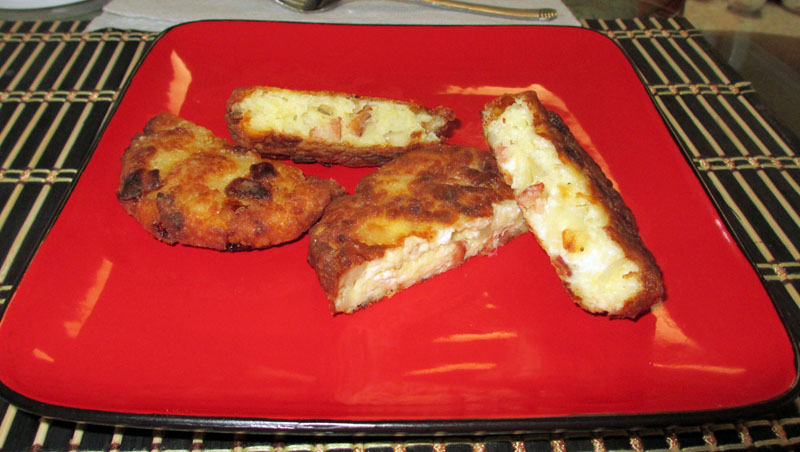Tried and tested, this recipe will never disappoint!
Over the years, I’ve tried many different pierogi dough recipes, well over two dozen. But for some reason, the recipe below is the one I always come back to. It is easy to make, tasty, and easy to roll. It is also an old Polish family recipe:
- Stir together 3 1/2 cups flour and 1/2 teaspoon salt
- Scald (warm but don’t boil) 1 cup milk and add 1/2 stick (4 Tablespoons) butter.
- Add the hot mix mixture to the flour mixture and mix well. (I use a Kitchen-Aid with dough hook).
- Then add two beaten eggs to the mixture.
- Knead a minute or two. Add a bit more flour if too sticky, but it will be just a bit sticky.
- Form into a ball, put on a plate or cutting board and cover with a tea towel, and let it rest for 20 minutes. This is critical—the dough needs to hydrate!
- When it’s rested, roll out thinly (under 1/8”) and cut out circles. You can roll it quite thin if you want, it’s very elastic and will hold up well.
- Fill with your filling of choice!
One batch of dough will make approximately 42 3-1/2 inch circles (depending on how thin you roll it–don’t be afraid to go thin!). The recipe came from my mother’s cousin Stella Kokaly who got it from a family friend, Lottie Szemraj. As a person who has experimented with well over several dozen varieties of pierogi dough recipes in my time, this is hands down the best ever.
What’s Next? Now that you made your pierogi, if you are not going to eat them immediately, what do you do? To eat them immediately, you boil them in salted water for about 5 minutes. They will float to the top. But what if you want to freeze them? I wrote about this in my blog here: A Pierogi Dilemma–to boil then freeze, or freeze, then boil…. | Moja miłość do Polski (leonkonieczny.com).
Fresh Farmer’s Cheese Recipe
This recipe is not mine and is from another web site. If you want step-by-step instructions, use this link. You can find the original recipe on the about.com web site here.
Ingredients:
- 2 quarts whole milk (use pasteurized, instead of ultra-pasteurized, if available)
- 2 cup buttermilk
- 1 tablespoon white vinegar
- 1 1/2 tsp salt
- cheesecloth, rinsed
Preparation:
In a heavy-bottomed pot, over low heat, slowly heat the milk up, stirring often, until it is just about to simmer (about 180 degrees F). Stir in the buttermilk, and then the vinegar, and turn off the heat. Very slowly stir until you see the milk separating into curds (the solids) and whey (the liquid). Leave undisturbed for 10 minutes.
Line a large strainer with 2 layers of cheesecloth, and place over a stockpot to catch the whey. After the 10 minutes, ladle the curds into the cheesecloth, and allow the whey to drain for 10 minutes. Gather up the edges of the cheesecloth, and tie a string around the top to form bundle. Tie the string to a wooden spoon or dowel, and hang the cheese curds over the stockpot and continue draining for 30 minutes.
After draining, remove the cheese from the cloth, and transfer into a container. Stir in the salt and refrigerate. This fresh cheese can be used for up to 5 days. Use as a spread, or as you would use cream cheese, or cottage cheese.
Of course, I use the cheese for my potato & cheese pierogi. It makes the best ever, far superior to store-bought farmer’s, cottage, or ricotta cheese. Give it a try, you’ll love it!
**This post was originally written for my 6th annual Pierogi Party in December 2012:
Today is the day of my 8th annual pierogi party. I want to “immortalize” two recipes that will play a bit part in our pierogi-making today, my favorite pierogi dough recipe, and a fresh cheese recipe–I use the fresh cheese for my potato/cheese pierogi.

